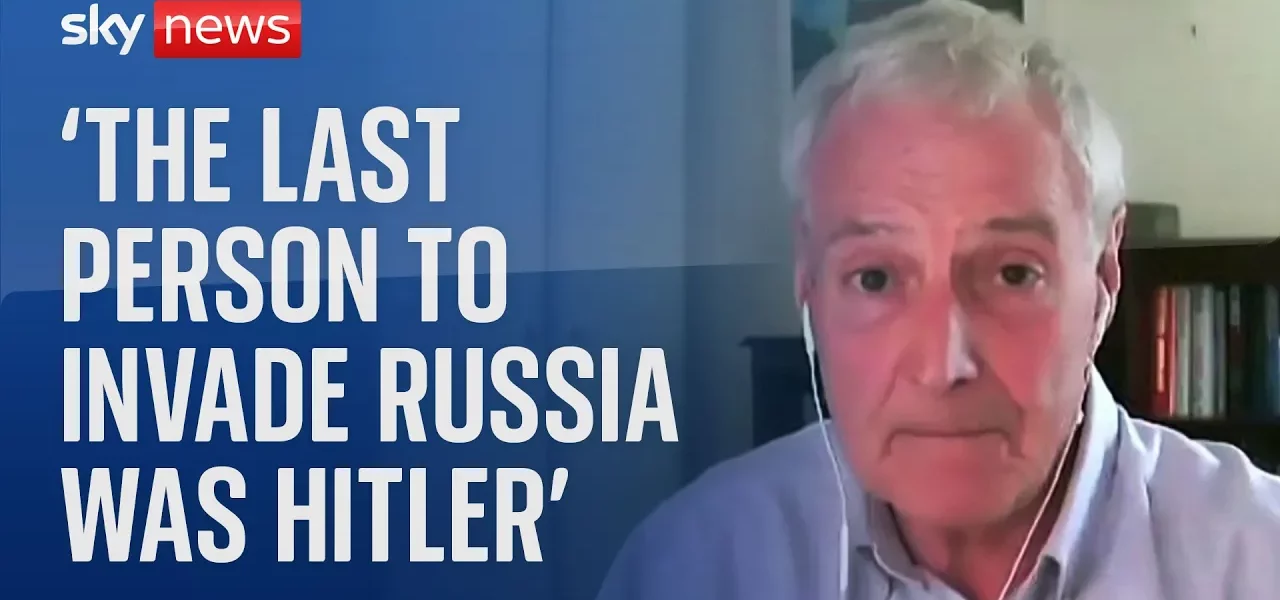Latest Developments in the Ukraine Conflict: An Analysis by Professor Michael Clark

In this article, we delve into the latest insights from security and defense analyst Professor Michael Clark, examining the recent intensification of fighting in Ukraine and its implications on the ongoing conflict with Russian forces.
Introduction
The Ukraine conflict has seen significant escalations in recent months, particularly with the emergence of new combat scenarios that challenge both Ukrainian and Russian military strategies. In a recent discussion, Professor Michael Clark provided critical insights into the evolving landscape of this war, highlighting the ferocity of the fighting and the strategic maneuvers of both parties involved. As the situation unfolds, it is essential to understand the implications of these developments on the broader conflict and the potential outcomes for both nations.
Current Fighting in Ukraine
As of now, the fighting has intensified, particularly to the east of a newly established pocket that Ukrainian forces have opened up on the Russian side of the border. This area has become a focal point of contention, with multiple engagements reported.
Overview of the Fighting
Reports indicate that there is ferocious fighting not only to the east but also to the northwest, specifically around the region of Korono. Ukrainian forces appear to be pushing eastward from their positions, leading to significant military engagements.
Geographical Analysis of the Pocket
The current pocket established by Ukrainian forces is notable for its size, measuring approximately 30 miles in length and 14 miles deep at its furthest extent. This area, while not entirely under Ukrainian control, has seen significant territorial gains.
- Approximately 530 square kilometers have been secured by Ukrainian forces.
- Ongoing combat is reported in an additional area of similar size.
Strategic Implications of the Counter-Offensive
The recent counter-offensive by Ukrainian forces marks a significant shift in the operational landscape of the war. This maneuver not only surprises Russian forces but also showcases the capability and determination of Ukrainian military strategy.
Surprise and Tactical Advantages
One of the most significant aspects of this counter-offensive is the element of surprise. Ukrainian forces have managed to launch operations where Russian troops least expected, utilizing their knowledge of the terrain to their advantage.
Military Assets and Reinforcements
Ukrainian forces have deployed elements from at least three competent brigades: the 22nd Mechanized Infantry Brigade, the 88th Mechanized Infantry Brigade, and the 80th Air Assault Brigade. Such a deployment underscores their commitment to maintaining control over the newly gained territory.
- Deployment of engineering and counter-mining equipment.
- Implementation of air defense systems.
- Utilization of long-range mortars and multiple launch rocket systems.
Russian Response and Strategic Challenges
In response to the Ukrainian counter-offensive, Russian forces are reportedly reallocating troops from other frontlines in an attempt to address this new threat. The implications of these movements are significant for the overall military strategy of Russia.
Historical Context of Territorial Defense
The current situation is particularly alarming for Russian leadership, as it marks the first time since World War II that Russian territory has been directly threatened by foreign military action. This historical context adds pressure on President Putin to respond decisively.
Potential Future Outcomes
As the situation develops, the Ukrainian strategy appears focused on not only retaining control of the pocket but also compelling a costly Russian response. This could lead to a redistribution of Russian military resources away from other critical areas.
Negotiation Scenarios and Future Prospects
While the immediate military focus is on maintaining control over the newly acquired territory, the broader question of negotiations looms large. Professor Clark suggests that any potential ceasefire negotiations may be far off, given the current dynamics.
Challenges to Negotiation
The viability of any negotiations hinges on the Ukrainian ability to hold their ground. If they manage to sustain their position, it could strengthen their bargaining power in future discussions.
Strategic Objectives of Ukraine
Ukraine’s objectives appear twofold: to demonstrate military capability and to influence international perception regarding the nature of the conflict.
Conclusion
In conclusion, the ongoing conflict in Ukraine continues to evolve with significant military engagements and strategic counter-offensives. Professor Michael Clark’s analysis emphasizes the complexity of the situation, highlighting both the immediate tactical advantages gained by Ukrainian forces and the long-term implications for Russian military strategy. As the situation develops, it is crucial for observers to stay informed and understand the broader consequences of these military actions. For those interested in further analysis and updates on the Ukraine conflict, be sure to check out our related articles on military strategies and geopolitical implications.
“`




